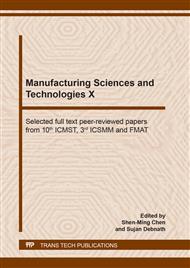p.117
p.122
p.129
p.139
p.147
p.154
p.163
p.169
p.178
Defect Reduction in Forming Process of Fired Clay Floor Tiles by Six Sigma Approach
Abstract:
The objective of this research was to reduce defects in the forming process of fired clay floor tiles by modifying the parameter settings of the influential factors using the Six Sigma approach. The current process had 152,871.16 DPPM (Defect Parts per Million). The main cause of this problem was the rough surface problem in the forming process. The five steps of the Six Sigma quality improvement approach were exercised in this research, i.e. define, measurement, analysis, improvement, and control phases, respectively. This research started by studying in details of the production process to find relevant factors that could cause a rough surface defect. The main factors were selected and analyzed by Failure Mode and Effect Analysis (FMEA). After that, the settings of each factor were discovered by applying the Design of Experiment (DOE) approach. The results showed that the appropriate settings were the sieve size of pan mill setting to 18 Mesh and the size of sieve holes at pan mill setting to be uniformly distributed. It is found that the defect was reduced to 49,151.14 DPPM, which is 67.85% of the defect before the improvement.
Info:
Periodical:
Pages:
147-153
Citation:
Online since:
June 2020
Authors:
Keywords:
Price:
Сopyright:
© 2020 Trans Tech Publications Ltd. All Rights Reserved
Share:
Citation:


